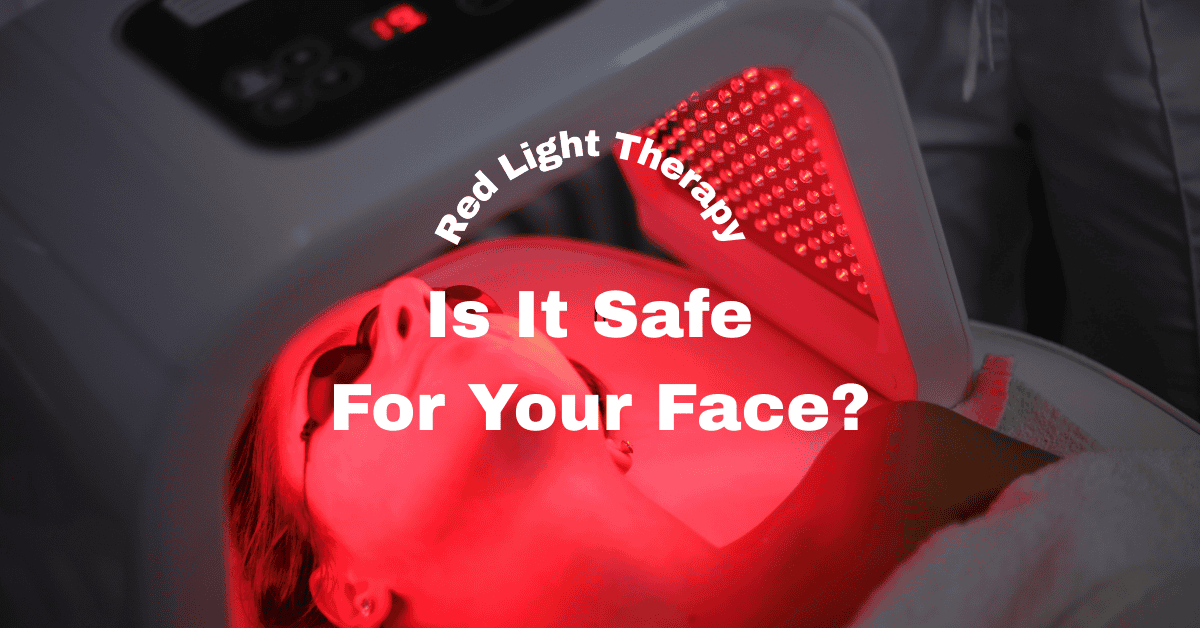Red light therapy is widely promoted for facial rejuvenation, but many people wonder if it’s truly safe for their skin and eyes. While most dermatologists and medical organizations agree that red light therapy is generally safe when used as directed, it’s important to understand the potential risks and how to avoid them.
This guide breaks down the top five safety considerations, drawing on expert recommendations and the latest research, so you can make informed decisions about your skincare routine.
Key Takeaways
- Red light therapy for the face is safe for most people when used as directed.
- Overuse or misuse can lead to temporary redness, irritation, or even blistering.
- Eye protection is essential during facial red light therapy to prevent discomfort or injury.
- Some medications and health conditions can increase your risk of photosensitivity reactions.
- Consult a dermatologist before starting, especially if you have sensitive skin, eye conditions, or take photosensitizing drugs.
Understanding Facial Red Light Therapy Safety
Red light therapy uses visible red and near-infrared wavelengths to stimulate skin cells, promote healing, and reduce inflammation. Unlike ultraviolet (UV) light, red light does not damage DNA or raise cancer risk, making it a safer alternative to sun exposure and tanning beds, according to the American Academy of Dermatology and Cleveland Clinic.
Most studies and clinical reviews indicate that red light therapy is non-toxic, non-invasive, and considered low risk for facial use when following manufacturer guidelines. However, like any light-based treatment, there are important safety considerations to keep in mind.
1. Skin Irritation and Redness
Mild skin irritation is the most common side effect reported with facial red light therapy. According to dermatologists and sources like WebMD and the Cleveland Clinic, some users may notice temporary redness, itching, or sensitivity after a session, especially if the device is used for longer than recommended or at higher intensities.
In rare cases, overuse can cause swelling or even blistering, particularly with professional-grade devices or improper home use. To minimize risk, start with shorter sessions and gradually increase duration as your skin adapts. If irritation persists, reduce frequency or consult a dermatologist.
2. Eye Safety Risks
Direct exposure to red or near-infrared light can cause eye discomfort, visual disturbances, or-in rare cases-damage, especially with high-intensity devices. Experts recommend always wearing protective goggles during facial treatments and never looking directly at the light source, even with your eyes closed.
People with pre-existing eye conditions or those taking medications that increase light sensitivity should be especially cautious and consult an eye care professional before starting therapy. Many FDA-cleared devices include built-in eye protection, but following the manufacturer’s safety instructions is crucial for preventing harm.
3. Photosensitivity from Medications or Health Conditions
Certain medications and health conditions can make your skin more sensitive to light, increasing the risk of a photosensitivity reaction during red light therapy. Common culprits include some antibiotics (like tetracyclines), antifungals, diuretics, NSAIDs, retinoids, and even some herbal supplements. These drugs can trigger a burn-like rash or irritation when combined with light exposure.
If you’re taking any medication or have a medical condition that lists photosensitivity as a side effect, check with your healthcare provider before starting red light therapy. Avoiding or pausing photosensitizing medications before treatment can further reduce risk.
4. Burns or Blistering from Overuse
Although rare, burns or blisters can occur if red light therapy is used incorrectly-such as for excessively long sessions, at very high intensities, or with damaged equipment. Clinical trials and FDA safety reviews confirm that adverse effects are most likely when energy doses exceed recommended levels.
Always follow the device manufacturer’s guidelines for session length and intensity, and never exceed the recommended usage. If you experience blistering, severe redness, or pain, discontinue use immediately and seek medical advice.
5. Unsuitability for Certain Skin or Eye Conditions
Red light therapy is not suitable for everyone. Individuals with a history of skin cancer, active skin infections, or certain chronic skin conditions should consult a dermatologist before use. The same caution applies to those with a history of eye disease, recent eye surgery, or other eye concerns.
Pregnant people should also consult their healthcare provider, as research on red light therapy during pregnancy is limited. Professional guidance ensures that red light therapy is both safe and effective for your unique needs.
Practical Safety Tips for Facial Red Light Therapy
To maximize benefits and minimize risks, follow these expert-backed safety practices:
- Start with short, infrequent sessions and gradually increase as your skin adapts.
- Always wear protective goggles during facial treatments to protect your eyes.
- Use your device exactly as directed by the manufacturer, including recommended distance and session length.
- Review your medications for photosensitivity risks and consult your doctor if unsure.
- Monitor your skin and eyes for any signs of irritation or discomfort, and pause treatment if needed.
- Consult a dermatologist or eye care professional if you have underlying skin or eye conditions.
For more on choosing the right device and building a safe routine, see our beginner’s guide to red light therapy for the face.
Conclusion
Red light therapy is considered a safe, non-invasive option for improving facial skin health when used responsibly. Most people experience little to no side effects, especially when following recommended guidelines and using quality, FDA-cleared devices. However, risks such as skin irritation, eye discomfort, and increased sensitivity due to certain medications or health conditions are possible.
By starting slow, protecting your eyes, and consulting a healthcare professional when needed, you can enjoy the rejuvenating benefits of red light therapy while minimizing potential risks.
If you’re considering adding red light therapy to your skincare routine, take time to research devices, review your health status, and speak with a dermatologist if you have any concerns. For more safety tips, troubleshooting advice, and step-by-step routines, explore our related articles. Your skin’s health and safety always come first-choose wisely and enjoy the glow!
Related: Red Light Therapy Results: What to Expect in 30 Days
Leave a Reply